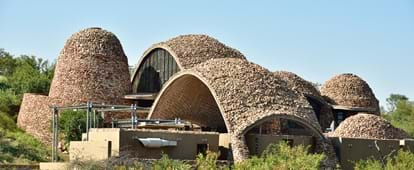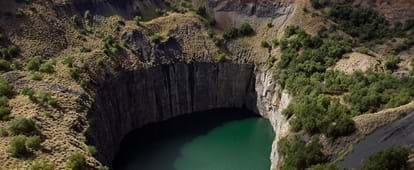By creating an account, I agree to the
Terms of service and Privacy policy
Choose your country and language:
Africa
Americas
Asia Pacific
Europe
OOwned by companies traditionally associated with diamond mining – namely De Beers, E Oppenheimer & Son and Ponahalo Holdings – the Diamond Route refers to a series of properties that have been set aside for conservation and tourism. Many have accommodation, ranging from luxurious lodges to camping, and offer a range of wildlife and outdoor activities.
In conservation terms, the Diamond Route properties span a wide range of habitats from the rolling red sands of the Kalahari, to the baobab-clad hills in the northern reaches of Limpopo.
These properties, spanning some 250 000ha of land, provide a haven for more than half of southern Africa’s 900-odd bird species and are home to 50 mammal species, including the endangered black and white rhino, sable and roan antelope and countless other smaller creatures.
Aside from offering excellent tourist facilities, the Diamond Route actively encourages environmental research, having supported more than 120 projects looking at topics as diverse as climate change, rhino conservation and insect life.
The crown in the jewel of the Diamond Route is Tswalu Kalahari, at 100 000ha the largest privately owned reserve in South Africa, located in the Korannaberg mountains in the Northern Cape. Tswalu Kalahari offers luxury accommodation in the form of a main lodge (The Motse) and a private villa (Tarkuni) that accommodates up to 10 guests.
This reserve specialises in conservation tourism and is home to lion, rhino, cheetah and smaller, more secretive species like aardvark, aardwolf and pangolin. Here guests can also go rhino tracking, on game drives or visit sites of archaeological interest.

VVenetia Limpopo Nature Reserve is a 32 000ha area that borders the World Heritage Site of Mapungubwe on the border of Zimbabwe and Botswana. Here, visitors can see four of the Big Five (aside from buffalo), while the reserve runs specialist carnivore tracking trips. Venetia has self-catering and catered accommodation for 15 guests.
About 2 hours' drive north-east of Johannesburg is the Ezemvelo Nature Reserve, typical grassland habitat once common on the Highveld, which offers hiking trails, birdwatching, horse riding, game drives and guided walks.
In Johannesburg, visitors can view the beautiful Brenthurst Gardens, home to the Oppenheimer family since 1920. The gardens are now a refuge for urban wildlife, including a variety of insects, birds, small mammals and indigenous plants.
Clustered around Kimberley, visitors can take their pick from the Dronfield Nature Reserve (10km outside town with chalets on offer), Benfontein (10km south of Kimberley with rustic camping facilities) and Rooipoort, a former hunting farm on the Vaal River about 60km to the west of Kimberley.
Rooipoort is the largest of these properties and famous for its 4 600 petroglyphs (rock engravings) that can be found on a rocky outcrop there. Here, visitors can also spend the night in The Shooting Box, a historic hunting cottage shipped out in ‘kit’ form from England in 1899 and once used by Cecil John Rhodes (it sleeps 4). There is also a luxury tented safari camp close to the river.

AAlso part of the route is the Big Hole in Kimberley, a historical and cultural display built around the world’s largest excavation by human hands that tells the story of the diamond rush of the late 1800s.
TTravel tips & planning info
Who to contact
Tswalu Kalahari
Tel: +27 (0)53 781 9331
Email: res@tswalukalahari.com
How to get here
Check the website for contact and booking details.
Best time to visit
Autumn (April/May) and spring (September/October) tend to be milder. For game viewing, late winter is always a good time.
Tours to do
Game drives, guided walks, horseback trails, hikes.
Get around
Tswalu has fly-in facilities. Other reserves require self-drive.
What will it cost?
Prices range depending on the quality of the accommodation. Tswalu is at the top of the range – expect to pay upwards of R20 000 a night per person here, with full board.
Length of stay
A 2- to 3-night stay is always sensible.
What to pack
Most of these areas are hot in summer (November to February) and can be cool at night in winter.
Where to stay
Luxury accommodation is available at Tswalu, Venetia and Rooipoort. Dronfield has chalets, and there's camping at Benfontein Nature Reserve. Visitors to the Big Hole in Kimberley can stay at the Protea Hotel close by or in a guest house in town, while Ezemvelo Nature Reserve north-east of Johannesburg has a range of accommodation from rustic through to camping and hiker huts.
Related links

